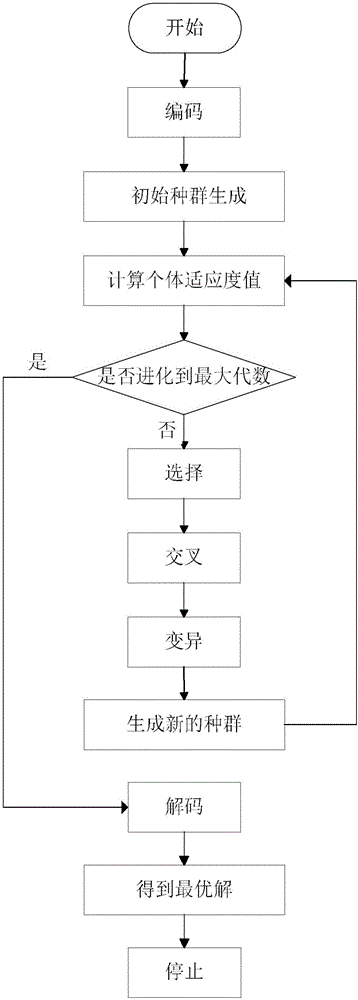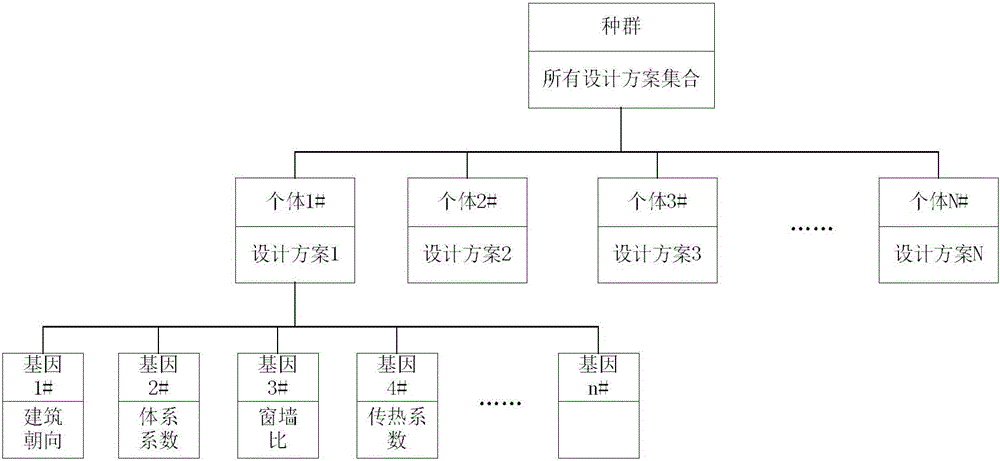Building multi-objective optimization design method based on performance orientation
A technology of multi-objective optimization and design method, applied in the field of multi-objective optimization and design of buildings based on performance orientation, which can solve problems such as increasing energy consumption, reducing indoor thermal comfort, and inability to intuitively judge the effect.
- Summary
- Abstract
- Description
- Claims
- Application Information
AI Technical Summary
Problems solved by technology
Method used
Image
Examples
Embodiment 1
[0040] A performance-oriented multi-objective optimization design method for buildings, comprising the following steps:
[0041] 1) First determine the variables in architectural design: orientation, shape coefficient, north-facing window-to-wall ratio, south-facing window-to-wall ratio, east-facing window-to-wall ratio, west-facing window-to-wall ratio, external wall heat transfer coefficient, external wall thermal inertia index, roof Heat transfer coefficient, roof thermal inertia index, external window heat transfer coefficient. And limit the value range of each variable, the range is based on the needs of the owners and the current national and local building energy-saving design standards and design specifications such as the "Design Standards for Energy Conservation of Residential Buildings in Hot Summer and Cold Winter Regions".
[0042] 2) Set the performance goals of architectural design, and select the building's annual energy consumption, indoor thermal comfort, and...
Embodiment 2
[0055] A typical residential building in Chongqing is selected as an analysis case. The total building area of this case is 600m2 2 , 3 storeys high, 2.8m high, 2 households per floor, and the construction area of each household is the main household area of a family of 3 in Chongqing, about 90m2 2 . A multi-objective optimization model is used to find architectural design solutions that can save energy while ensuring indoor thermal comfort. Specific steps are as follows:
[0056] 1) First determine the variables in architectural design, and limit the value range of each variable: determine the variable type and limit its value range:
[0057] Since the building layout, floors, building area, and shape coefficient have been limited, the remaining 10 design variables given in Table 2 need to be solved. According to the "Design Standards for Energy Conservation of Residential Buildings in Hot Summer and Cold Winter Areas", the variation ranges of these 10 variables are ...
PUM
 Login to View More
Login to View More Abstract
Description
Claims
Application Information
 Login to View More
Login to View More - R&D
- Intellectual Property
- Life Sciences
- Materials
- Tech Scout
- Unparalleled Data Quality
- Higher Quality Content
- 60% Fewer Hallucinations
Browse by: Latest US Patents, China's latest patents, Technical Efficacy Thesaurus, Application Domain, Technology Topic, Popular Technical Reports.
© 2025 PatSnap. All rights reserved.Legal|Privacy policy|Modern Slavery Act Transparency Statement|Sitemap|About US| Contact US: help@patsnap.com



